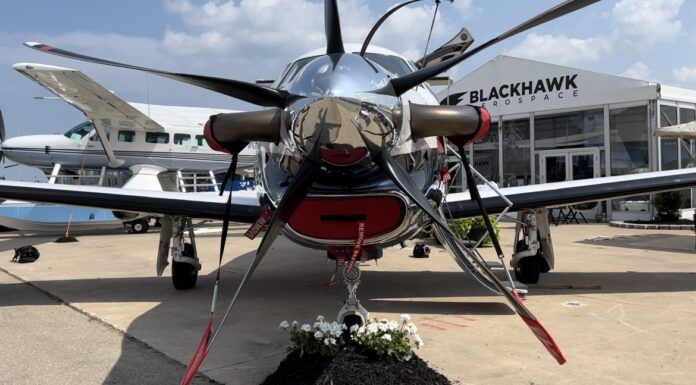That headline is pretty much the same as it was when we took a look at the hardened aircraft insurance market a couple of years ago. At the tail end of 2023, owners, underwriters and aircraft sales pros still tell us that senior pilots (aged 70 and older) and inexperienced pilots are attention-getters when it comes to specific types of aircraft. Here’s a quick overview and some tips for policy shopping.
LOYALTY MATTERS
If you’re considered a high risk and you have a policy for the airplane you want to fly, now is not the time to jump carriers. This could mean paying more than you want. Luke Barnette, an underwriting manager at Avemco (perhaps among the more flexible in the market), pointed out that while the company isn’t going out of its way to drop its higher-risk clients (including senior pilots, as many companies are doing), there are some that the company simply won’t insure.
As one example, it’s likely that a 75-year-old who wants insurance for his first twin-engine airplane won’t get a policy—at any cost. But those insured who already safely operate their twins will likely remain covered. The same can be said for retrac singles. Avemco doesn’t insure turbines or pressurized singles.
We asked insurers and brokers why senior pilots are under such scrutiny and we were told the statistics are the same as they ever were: While all demographics have issues, older pilots have more landing and taxi-related accidents than younger ones. This is especially true in tailwheel aircraft, we’re told.
“While we have tightened our underwriting criteria for seniors (rate increases, for one), we aren’t dropping existing business,” Barnette told us. A lot has to do with the value of the airplane, which is the case for younger inexperienced pilots, too. Point is, if an 80-year-old shows up to insure a $300,000 Beech Baron, the majority of insurers won’t write the policy.
On the other hand, it could also be difficult for a newer pilot to get coverage for a late-model Cirrus, as one example, that can easily be valued north of $500,000. The point is, be realistic when it comes to matching piloting experience with the aircraft. Avemco and others generally restrict lower-time pilots to a hull value of around $200,000. In the world of Cirrus models, insurers will likely require focused transition training, including Cirrus Embark—a training program designed exclusively for new owners of pre-owned Cirrus models. Insurance aside, that’s effort we’ll spent, in our view.
TWIN-ENGINE AND EXPERIMENTAL COVERAGE
Unless it’s a pressurized twin, we don’t see many reasons why the majority of owners can’t get insurance. Show up with a multi-engine rating and at least 200 hours total time and you’ll likely score a policy for a Baron, Piper Seneca or Cessna 310, as a few examples. Avemco told us they require at least 600 hours total time and an instrument rating to be considered for coverage in a pressurized twin like a Cessna 340 or Piper Aerostar, to name a couple. Interestingly, Avemco won’t insure any single-engine pressurized models, but several other insurers do, but at a sizable price premium, especially modded ones with a high hull value.
With the homebuilding market busting wide open since the pandemic, there has been huge demand to insure experimentals. If you’re setting out to build one—or buy an existing flying kit—the idea here is to stay away from the rare models. Instead, stick with experimentals that are out there in big numbers. Van’s Aircraft, of course, comes to mind, and insurers we spoke with welcome this business. The same can be said for Zenith models, to name another. Then again, choose a model within your skill range. If you are a new pilot and plan to learn to fly in your completed kit, a high-performance Van’s RV-10 probably doesn’t make sense.
Insurers are concerned with supportability and the availability of replacement parts for reasonable amounts of money. This is a problem that has plagued the light sport category for years. LSA models generally haven’t done we’ll in the hands of ham-fisted pilots who have stepped down from heavier models. More than one insurer told us that the market learned the hard way, with plenty of insurance claims the result of landing prangs. When asked which LSA models are the most insurable, the Flight Design CTLS and Legend Cub unanimously came up among underwriters for favorable rates. So did the Van’s RV-12.
One underwriter pointed out that plenty of overseas LSA companies are defunct and that in itself makes some models uninsurable, although liability insurance could still be doable. Again, ask before you buy anything, especially if it has a tailwheel or floats. Planes on straight floats will be easier and cheaper to insure than flying boats and amphibs. Avemco told us it doesn’t insure the LSA Icon A5 amphib simply because of the smaller fleet size and some of the high-profile accidents. Again, accept that you might only get liability insurance for some seaplanes.
The best advice we can offer for staying insured in the current market is to match the aircraft to your skill level, train as often as you can, remain loyal to your insurer and just accept that you’ll have to step down in complexity and performance as you age.
We’ll look at how the FAA’s new MOSAIC proposal might change the insurance market (perhaps not for the better) in a separate article.


